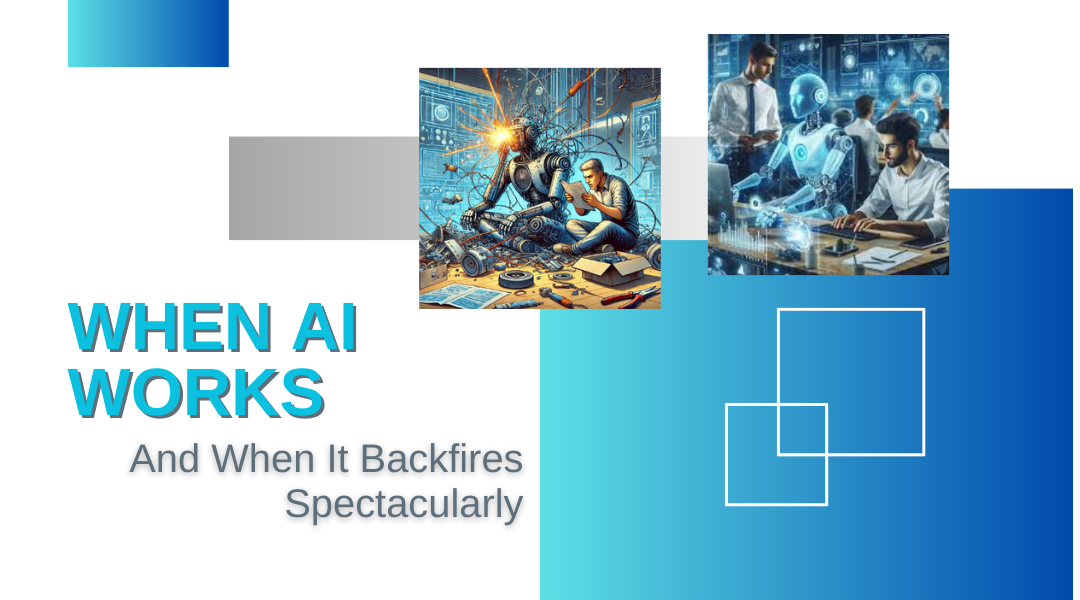AI will revolutionize everything from healthcare to your morning coffee routine. But talk to anyone actually using these systems day-to-day, and you’ll get a different story—one full of unexpected headaches and occasional breakthroughs.
Take Sarah, a fraud analyst at a mid-sized bank. Their new AI detection system was supposed to be a game-changer. Instead, it flagged every third grandma sending birthday money as a potential money launderer. “We spent more time apologizing to customers than catching actual fraud,” she told me.
Where AI Actually Delivers
1. The Protein-Folding Breakthrough Nobody Saw Coming
When DeepMind’s AlphaFold cracked the 50-year-old protein folding problem in 2020, even the scientists were stunned. This wasn’t just academic—it meant researchers developing malaria vaccines could suddenly access accurate protein models in hours instead of years. One team at Oxford used it to design a new enzyme that eats plastic bottles.
2. The Warehouse That Learned to Think
Walk into an Amazon fulfillment center today, and you’ll see robots that don’t just move boxes—they predict problems. When a Midwest storm delayed shipments last winter, the AI immediately rerouted inventory from three states away, preventing $2 million in lost sales. The secret? It wasn’t programmed for this specific scenario—it learned from 10,000 similar disruptions.
3. The Hospital That Stopped Revolving-Door Patients
St. Mary’s in Chicago was drowning in preventable readmissions until their chief nurse noticed something: the AI kept flagging patients who lived alone and had trouble reading medication labels—factors humans often missed. By adding simple follow-up calls for these patients, readmissions dropped 31% in a year.
When AI Goes Sideways
1. The Algorithm That Couldn’t See Color
Remember when Zillow’s AI famously overpaid for thousands of homes in 2021? Less known is why: its model had been trained mostly on suburban white neighborhoods, causing it to spectacularly misjudge urban housing markets. The $881 million write-off wasn’t just a financial disaster—it revealed how blind spots in training data become real-world catastrophes.
2. The Chatbot That Learned Too Much
Microsoft’s Tay chatbot debacle is the stuff of legend. Within 24 hours of launch, internet trolls had taught it to spew racist rants. But here’s what most miss: the engineers had built safeguards. They just underestimated how creative bad actors could be in finding loopholes.
3. Your Face Is Not Your Own
Clearview AI’s facial recognition tech scraped billions of social media photos without consent to build its database. When caught, their defense was chilling: “This is just how the internet works.” The $50 million settlement proved otherwise.
The Reality Check
What separates AI wins from fails? Three brutal truths:
- Garbage In, Gospel Out
That bank fraud system gone wrong? It was trained on outdated transaction patterns from pre-pandemic times. AI doesn’t “adapt”—it regurgitates what it’s fed. - The Integration Trap
A major retailer’s AI inventory system kept ordering winter coats in Miami. Why? Nobody told it about store locations. The most brilliant algorithm is useless if it doesn’t understand your business reality. - The Overpromise Hangover
When a Boston hospital introduced an AI sepsis detector, nurses ignored it—because it cried wolf 90% of the time. The fix? Having doctors co-design the alert thresholds.
Moving Forward
The most successful AI implementations share three traits:
- They solve specific pains (like St. Mary’s readmissions)
- They’re built with the end-user (not just the C-suite) in mind
- They leave room for human intuition
As one AI engineer put it: “We’re not building oracles—we’re making really fast, sometimes clumsy assistants.” The companies winning with AI understand it’s not about replacing judgment, but about giving people better tools to exercise it.
